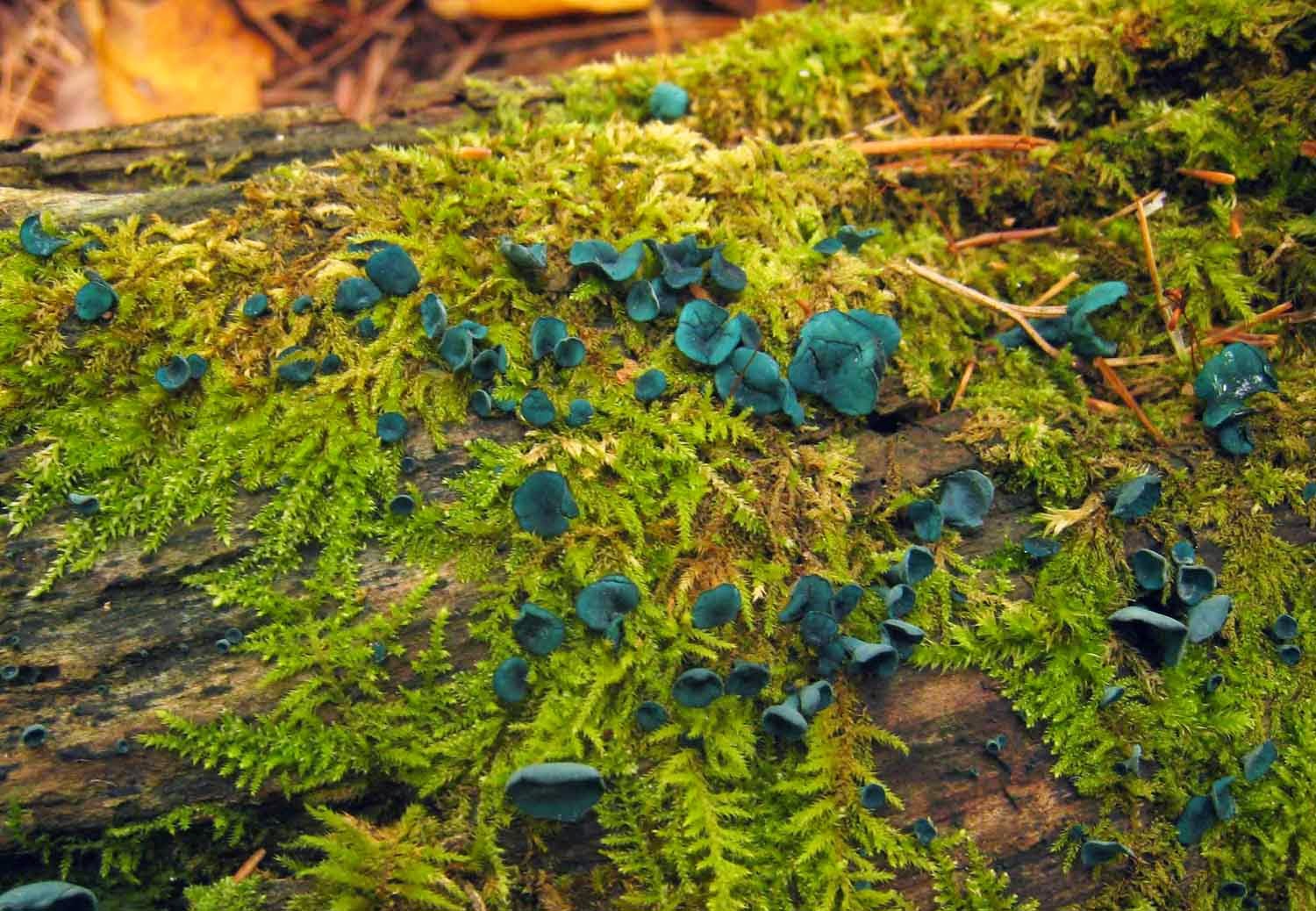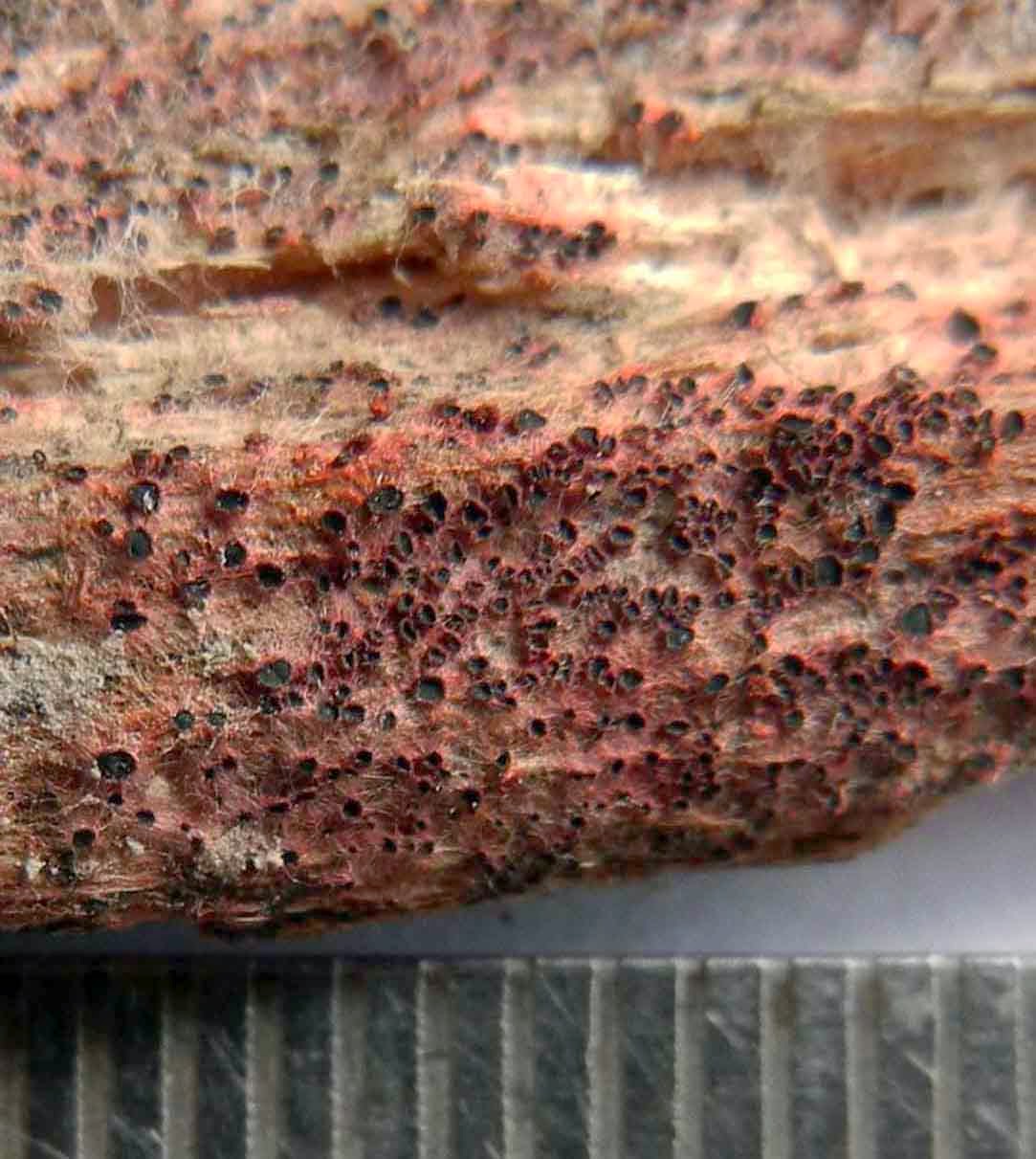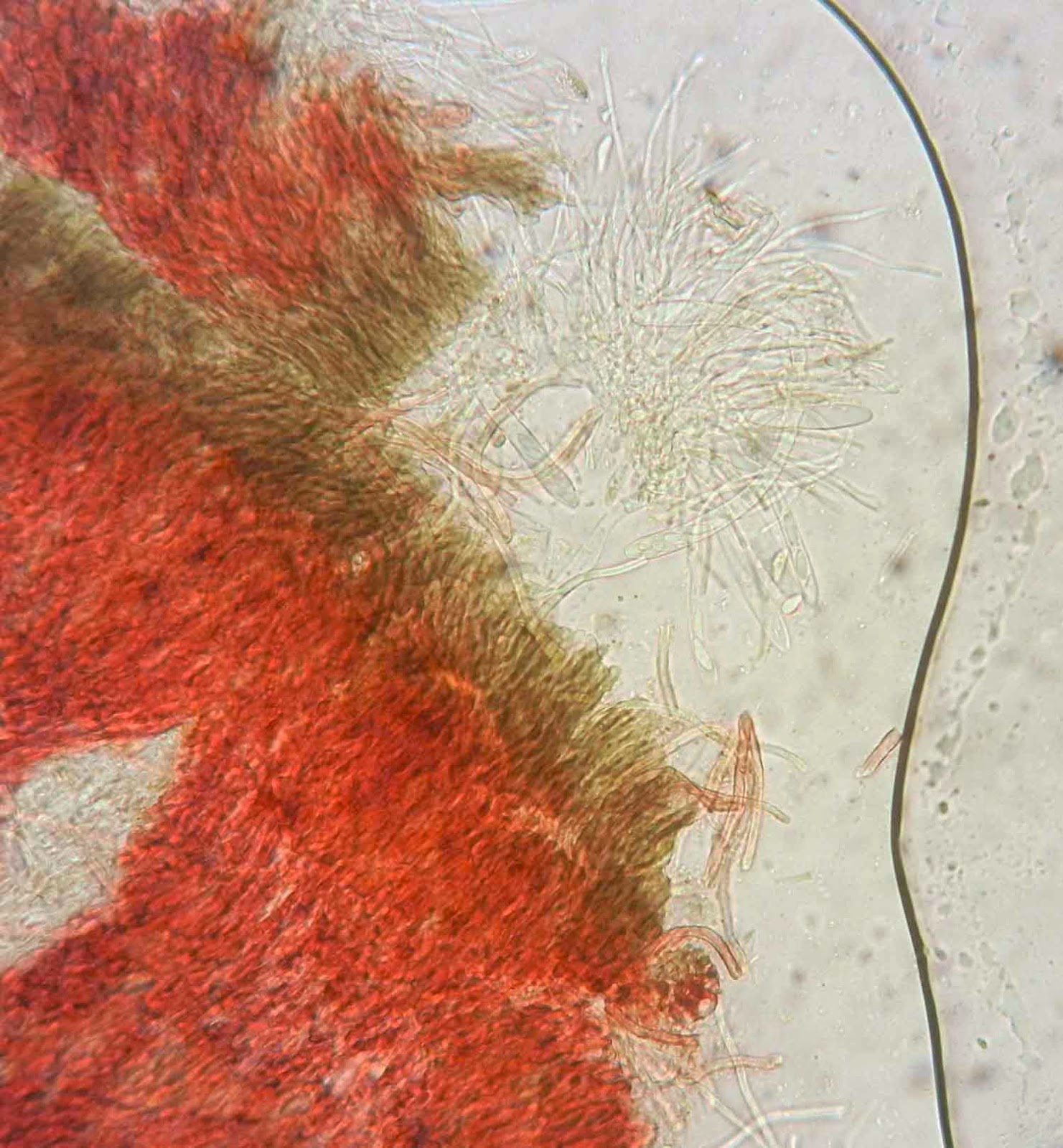 |
| Patinellaria sanguinea stains wood coral red. |
It’s easy to forget while collecting fungi that the ones we
find growing on wood and elsewhere are only their fruiting bodies—the actual
organism is usually hidden, its mycelium buried deep in wood or soil. But the microscopic mycelium of some wood-loving fungi make
it very clear just how large an area they’ve taken over by staining the wood
they’ve colonized. This staining, which can sometimes be dark lines, other
times extensive areas of colour, is called spalting.
 |
| Wood stained blue-green by the fungus Chlorociboria. |
The fairly common Chlorociboria
aeruginascens and its sister C. aeruginosa,
which can only be differentiated microscopically, stain the wood they’ve colonized
a stunning blue-green with the pigment xylindein. This beautiful blue wood has
been used by woodworkers since at least the 15th century, primarily
in inlays (see examples here). It’s such a striking colour that studies are
underway to find a way to inoculate various forest trees with Chlorociboria to enhance the value of the lumber. Personally, I’m impressed that anyone has ever found a piece of this
blue wood in good enough shape to use for anything other than as a
conversation piece. In my experience, whenever I find it, the wood is already so decomposed I can easily pull it apart with
my fingers.
 |
| Chlorociboria produces gorgeous blue-green fruit bodies. |
Serendipitously, I recently came across a much more uncommon
helotiale that also stains wood.
 |
| Slightly dried Patinellaria sanguinea discs and subiculum. |
A month or so ago, I brought in a branch I’d left outside
for the winter that had had the beginnings of a mystery purple crust growing on
it in the fall. I hoped that by giving it a little warmth and moisture it might
revive and offer me some spores to help in its identification. But nothing
happened. Well, actually something
happened—the purple corticioid started decaying. I was about to relegate the
branch to the kindling pile when I noticed that in a couple of places its
surface was oddly coloured with reddish-pink spiderwebby fuzz. I assumed this
was just an unusual mold, but when I got out my loupe to inspect it I was
surprised to see a multitude of minute blackish discs embedded in it. Helotiale
type discs. Hmm.
 |
| Amazing colour of "black" Patinellaria sanguinea fruit bodies under the microscope. |
When I put a sample under the microscope I immediately saw
that the pink fuzz was not a mold, but a hyphal mat, or subiculum, that clearly
belonged to the blackish discs. Not only that, but, when sectioned, the “black”
discs were actually quite strikingly coloured. There were even some asci and
spores.
 |
| Wonky ellipsoid to clavate spores of Patinellaria. |
I didn’t have a clue what it was, or even how to start
looking to find a name since nothing like it was in either Fungi of Switzerland or the brand new Ascomycete Fungi of North America. I got my knife out and carved a
few chunks off the branch to dry for later study. It was only then that I
realized my little ascomycete had another interesting characteristic: it had stained
the wood a gorgeous coral red. Surely, I thought, this would make finding its
identity easier. But still no luck on Google or Ascofrance or anywhere else.
Days passed. I was doing an unrelated image search for another
minute black disc, Patellaria atrata,
this one sans color, when halfway
down the page a picture jumped out at me. It clearly showed exactly what I had accidentally
grown—mini blackish discs with a pinkish red subiculum. And they had a name. Panitellaria sanguinea.
I have not been able to find out much about this little
curiosity, which has also been known as Durella
sanguinea and Peziza sanguinea,
other than that it’s rare, grows in North America and Europe, and apparently
prefers hardwoods. If anyone can add anything else, I’d be grateful.
More Info:
Tom Volk’s Chlorociboria page
Panitellaria sanguinea
on Mycoquebec
Panitellaria sanguinea
on Mycokey
Robinson, S.C., Tudor, D., Snider, H., Cooper, P.A. 2012. Stimulating growth and xylindein production of Chlorociboria aeruginascens in agar-based systems. AMB Express 2(15).
More about spalting: Northern Spalting
George Grant Hedgcock. "Studies Upon Some Chromogenic Fungi which Discolor Wood." St. Louis, 1906
Robinson, S.C., Tudor, D., Snider, H., Cooper, P.A. 2012. Stimulating growth and xylindein production of Chlorociboria aeruginascens in agar-based systems. AMB Express 2(15).
More about spalting: Northern Spalting
George Grant Hedgcock. "Studies Upon Some Chromogenic Fungi which Discolor Wood." St. Louis, 1906

Hello. I am interested in sharing the unusual things I have found.
ReplyDeleteWhat kinds of unusual things?
DeleteI see red on bark of hardwoods.
ReplyDeleteBut no black spots.
Ideas?
Mark